The price of live pigs has continuously increased over the past month and has surpassed the 80,000 VND/kg mark, making many pig farmers in Dong Nai - the pig farming capital of the Southeast region - happy.
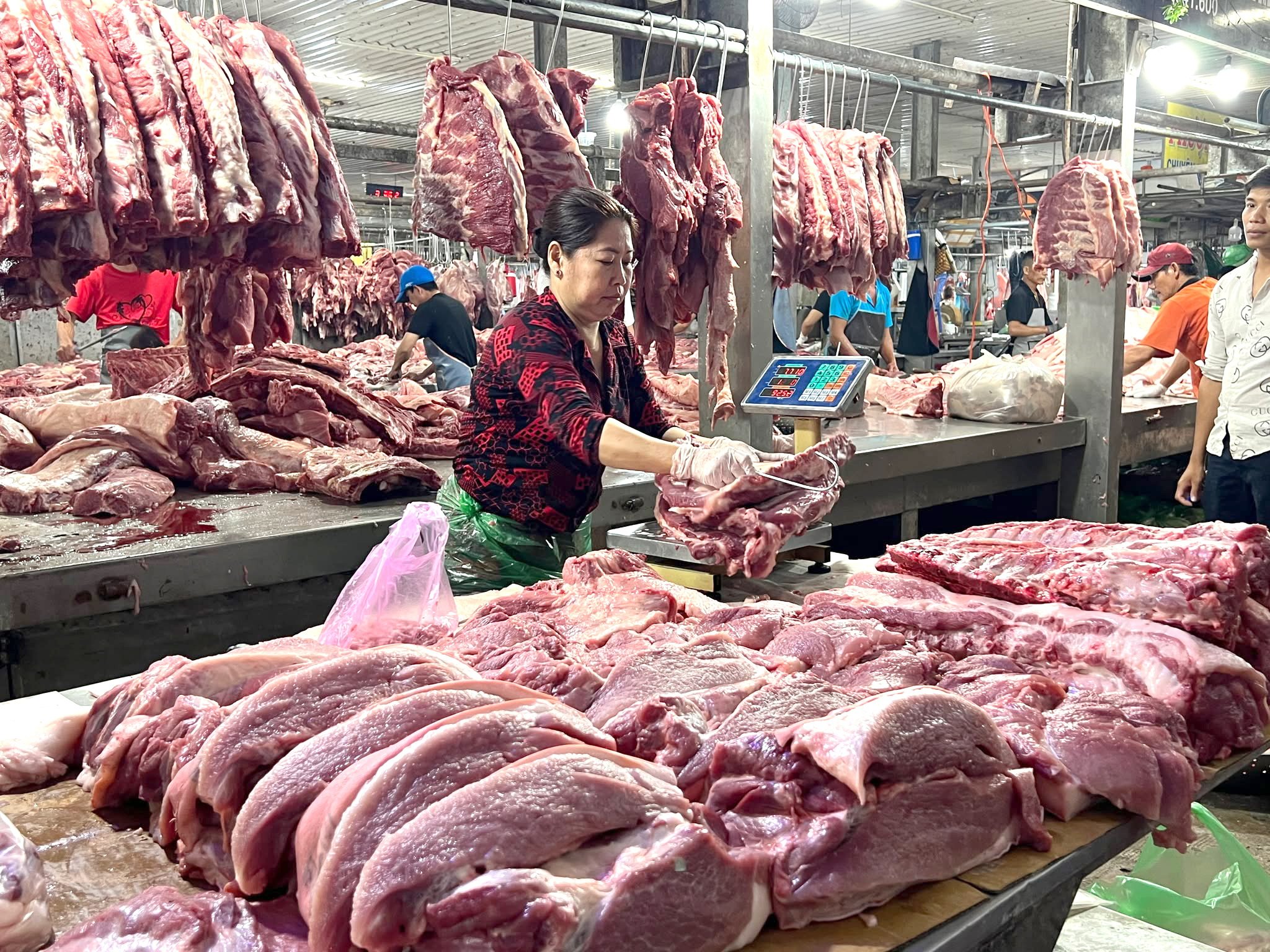
Pork prices continue to increase sharply despite weak purchasing power - Photo: THAO THUONG
Meanwhile, at the markets, the high retail price of pork has caused a sharp decrease in purchasing power, forcing traders to reduce the amount of imported goods. From March 3, the price of pork in the price stabilization program of Ho Chi Minh City will also be adjusted up.
Sharp increase since Tet until now
According to the price list of stabilized pork just approved by the Ho Chi Minh City Department of Finance, from March 3, the retail price of pork of participating enterprises will increase from 4 - 8.84%, depending on the item. Specifically, pork chops will increase by 13,000 VND/kg to 160,000 VND/kg; thigh meat will increase by 5,000 VND/kg to 130,000 VND/kg; armpit, lean meat, and thigh meat have new prices from 156,000 - 177,000 VND/kg.... The adjusted price is based on the price of live pigs at 74,000 VND/kg.
Mr. Nguyen Kim Doan, Vice President of Dong Nai Livestock Association, said that currently, live pigs are being purchased by traders at a price of about 80,000 VND/kg, an increase of about 10,000 VND/kg compared to last month. In some places, traders are purchasing live pigs at a price of 82,000 - 83,000 VND/kg.
According to Mr. Doan, since Tet, the price of live pigs has gradually increased and has continued until now. "With this price, farmers are making a lot of profit, more than 1 million VND for each pig sold," Mr. Doan said.
According to records, many pig farmers in Dong Nai are very excited because the price of pigs has increased after a long period of falling prices (at times it was only 40,000 VND/kg). Mr. Thang - the owner of a pig farm in Vinh Cuu district - said that the current price of live pigs is 10,000 - 15,000 VND/kg higher than the cost price. If this price can be maintained, farmers will have more conditions to recover their livestock farming.
Small traders are sad because of lack of customers.
The high price of live pigs has caused the price of pork at wholesale and retail markets to "jump" continuously. At the end of March 1, some markets in the center of Ho Chi Minh City such as Tan Dinh market, Da Kao market (District 1), Phu Nhuan market (Phu Nhuan District) ... the selling price of pork increased by an average of 10,000 - 15,000 VND/kg compared to last week.
Specifically at Tan Dinh market, the price of tenderloin is 180,000 VND/kg, pig tail is 252,000 VND/kg, cutlet is 113,000 VND/kg, thigh is 149,000 VND/kg, regular pork belly is 210,000 VND/kg, ribless pork belly is 280,000 VND/kg, and the price of baby back ribs has increased "hotly" to 300,000 VND/kg.
Many retailers said that the high price of pork has caused a sharp decrease in the number of products sold compared to previous months. According to trader Ngoc Tuyet, who specializes in pork trading at Binh Dien agricultural and food wholesale market (District 8, Ho Chi Minh City), the high price of pork has made many housewives feel discouraged and business people like her "unable to sit still".
"After Tet, purchasing power slowed down but it was not as alarming as it is now. It seems logical that many people buy so pork prices increase, but the price increased so rapidly and purchasing power decreased to the point of giving me a headache. In more than ten years of business, I have never had to reduce the amount of pork sold by 50%, or even let my employees take time off because of the reduction in pork supply to the market," Ms. Tuyet lamented.
According to the leader of Binh Dien agricultural and food wholesale market, on average the market consumes about 7,000 pigs per day, but currently this number has dropped sharply to only about 3,000 - 3,500 pigs, which means at times it has decreased by more than 50% compared to normal days.
Why are pork prices so high?
Explaining the recent sharp increase in pork prices, Mr. Nguyen Kim Doan said the main reason was the decrease in supply. Accordingly, in 2024, Dong Nai will relocate livestock farms from areas where livestock farming is not allowed. As a result, nearly 2,000 livestock farms will relocate or cease operations, causing a sharp decrease in supply.
In addition, some pig farm owners said that African swine fever outbreaks still occur occasionally, forcing many households to sell off pigs that are not "old enough". Meanwhile, the outbreak of acute diarrhea has also caused a sharp decrease in the supply of piglets. The risks of disease make farmers hesitant to re-herd and increase their herds, thereby causing the total pig herd to decrease.
Forecasting the price of pork in the coming time, Mr. Doan said that the price may still increase slightly in the short term but it is unlikely that there will be a shortage of pork. According to him, large farms and FDI enterprises still maintain a good herd and have the ability to increase the herd due to the stable supply of piglets.
On the other hand, this is past the peak of pork consumption (Lunar New Year), while many businesses have also increased pork imports. Therefore, a "price fever" situation will be difficult to happen.
Proposal to extend the time to relocate livestock facilities
In a recent document sent to the Department of Animal Husbandry, the Department of Agriculture and Rural Development of Dong Nai province proposed extending the time to relocate livestock facilities by 5 years.
Specifically, according to the provisions of the Law on Animal Husbandry, facilities located in areas where livestock farming is not allowed must be relocated before January 1, 2025. However, Dong Nai province has a rapid urbanization rate, in the near future there will be more areas where livestock farming is not allowed and livestock facilities must be relocated.
To facilitate localities, the department previously requested the Department of Animal Husbandry to advise the Ministry of Agriculture and Rural Development to submit to competent authorities to adjust regulations on the deadline for relocating facilities out of areas where animal husbandry is not allowed.
Adjustments should be made to allow localities to stipulate a relocation period or amend the Law on Animal Husbandry (Article 83, Clause 2) to extend the relocation period for livestock farms by 5 years. At the same time, to encourage livestock development, it is recommended to adjust the effectiveness of the policy on relocating livestock farms out of areas where livestock farming is not allowed.
Source: https://tuoitre.vn/gia-thit-heo-tang-nong-suc-mua-giam-manh-tieu-thuong-rau-vi-e-khach-20250302080738522.htm





![[Photo] Nhan Dan Newspaper displays and solicits comments on the Draft Documents of the 14th National Party Congress](https://vphoto.vietnam.vn/thumb/1200x675/vietnam/resource/IMAGE/2025/10/26/1761470328996_ndo_br_bao-long-171-8916-jpg.webp)

![[Photo] Enjoy the Liuyang Fireworks Festival in Hunan, China](https://vphoto.vietnam.vn/thumb/1200x675/vietnam/resource/IMAGE/2025/10/26/1761463428882_ndo_br_02-1-my-1-jpg.webp)
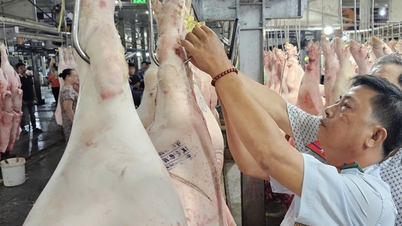
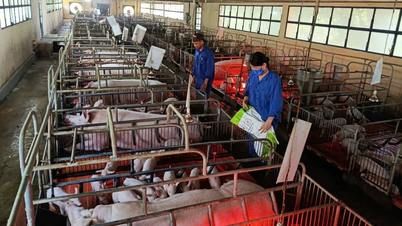


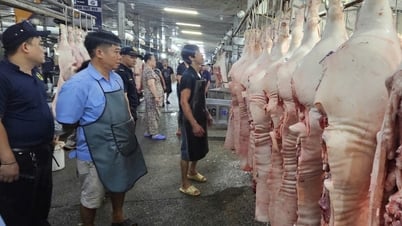



















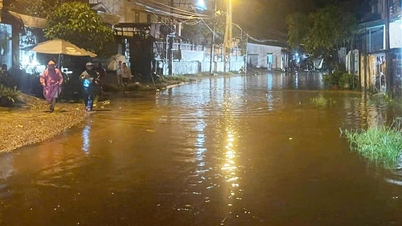

![[Photo] General Secretary To Lam received the delegation attending the international conference on Vietnam studies](https://vphoto.vietnam.vn/thumb/1200x675/vietnam/resource/IMAGE/2025/10/26/1761456527874_a1-bnd-5260-7947-jpg.webp)
![[Photo] Prime Minister Pham Minh Chinh attends the opening of the 47th ASEAN Summit](https://vphoto.vietnam.vn/thumb/1200x675/vietnam/resource/IMAGE/2025/10/26/1761452925332_c2a-jpg.webp)

















































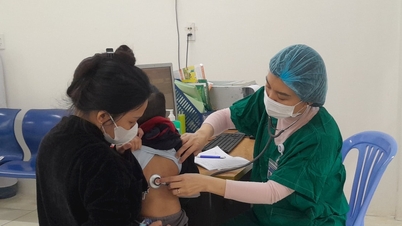








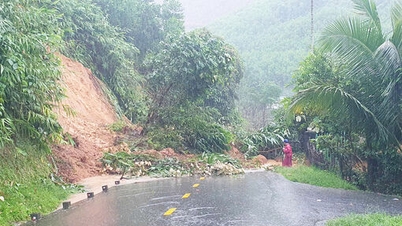
















Comment (0)